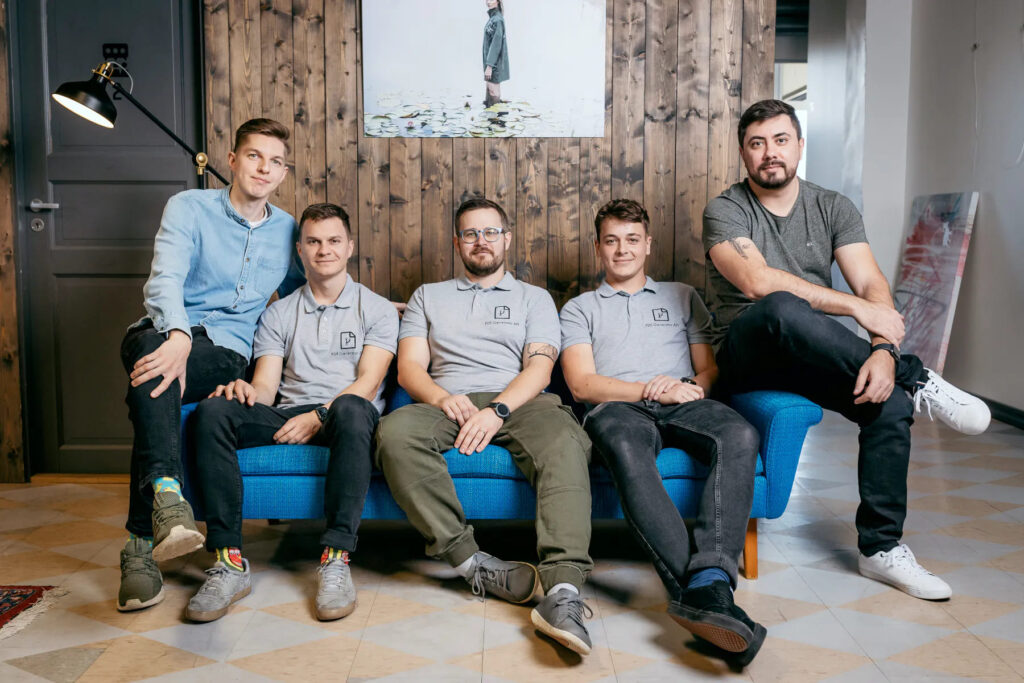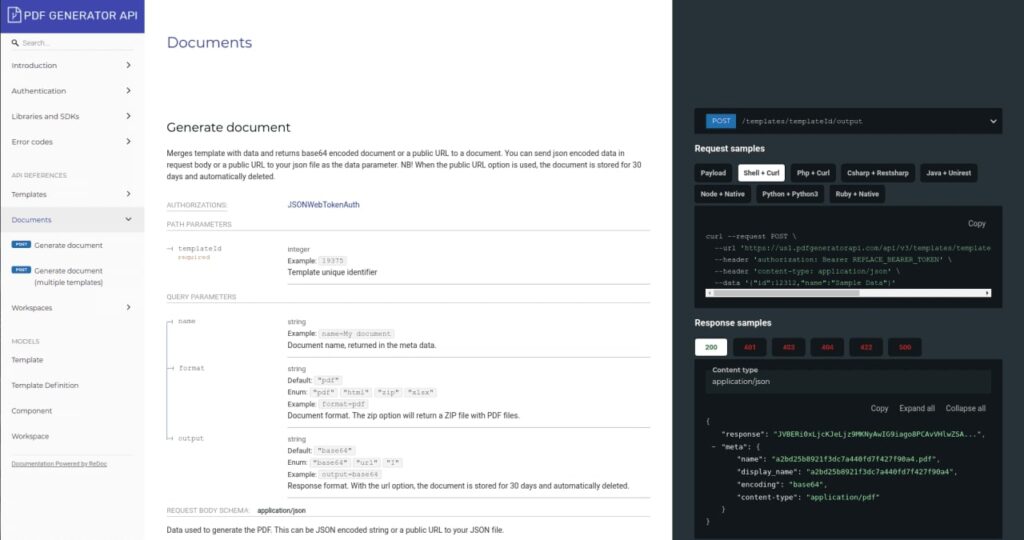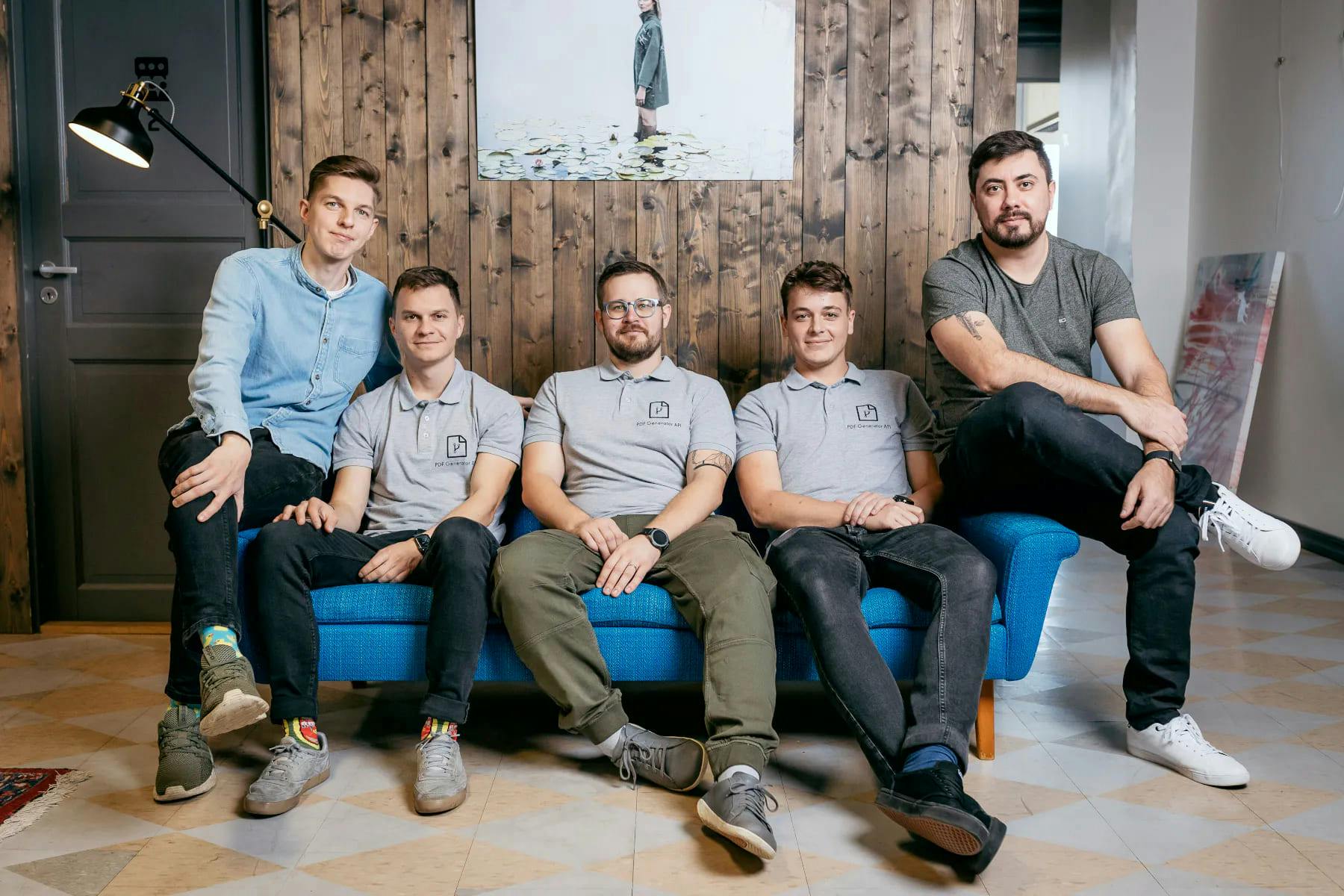
2021 in numbers
In 2021 PDF Generator API generated over 90M (you read right — that is ninety million!) documents on a total of 348 000 different templates. In total, we serviced 128 000 separate workspaces/users. Last but not least, we were also able to grow our business. In 2021 we saw a staggering 68% increase in our annual recurring revenue.
The year of new hires
This could not have been achieved without the help of some recent additions to our team in 2021. Namely — Veiko joined as visiting CMO to take our marketing efforts to the next level, and in late 2021, we welcomed Marian to our Brno office to beef up our support team. You might not realise this, but this is a 25% increase in our headcount. We promise you these will not remain our last hires, and you will be hearing more recruitment news in 2022.

On a sidenote — 2021 was also the year where we, as a team, had a chance to finally meet up physically, again — it had been too long. You can read more about our adventures in snowy Estonia in this post.
Experiments — sometimes lose, always win
Towards the beginning of the year, we decided to put more effort and focus on outbound sales by signing on an external sales team. We ended that experiment about 6 months later with minimal success but gained new insights. We found it difficult to assess whether a company has problems with document generation or not by just looking from the outside. This increased the sales cycle as we put a lot of effort into determining if the lead had problems we could solve. We concluded that we need to focus on making ourselves more visible to our ideal target customer in the place first. Inbound leads are already aware of their problems and are looking for the best solution, making the sales cycle much shorter.
2021 was also a year we restarted paid ads on Google and Shopify App Store. Although we are still to make it to breakeven, we have already concluded that, given proper focus, running paid ads might be suitable for use in broader terms. This is also where Veiko — our new marketing wizard, steps into the picture. We started noticing the tide turn as soon as Veiko took over the management of our Ads accounts. Veiko is also the guy behind our recently activated social media initiatives.
As part of our strive to involve more people in our business, we listed our share units on Funderbeam in July. Funderbeam is a blockchain-based global equity funding and trading platform that allows small- and medium-sized businesses to take advantage of the same possibilities as larger companies listing their shares on the stock exchange. The tokens are now freely tradable here. Go check it out.

Tech news? We have plenty.
In 2021 we also made a giant leap forward in getting our infrastructure in place to handle vastly more significant volumes. But who would be a better person to tell us about that than Bruno, our lead developer.
If in 2020 we planted a seed and built up our DevOps team, then in 2021, we started to harvest the results. We reached new levels with a new infrastructure based on newer and better technologies, robust monitoring, more automation, all in a more developer-friendly package. We turned the page, and now we have everything running on Kubernetes, Docker, and other tools that allow us to serve millions of users simultaneously without breaking a sweat. Whether our users need a single document or a library-full, we can handle it hassle-free — improving the experience along the way for everyone.
“We turned the page, and now we have everything running on Kubernetes, Docker, and other tools that allow us to serve millions of users simultaneously without breaking a sweat.” — Bruno
Also, with the new technology stack, we can focus not only on running the daily base operations but also on improving our codebase and including more and more features that we plan to roll out in 2022.
Companies that require on-premises deployment will also benefit from this and find the initial deployment, configuration, and updates much simpler and secure than in the past year, thanks to our Docker images.
The mission of the year: Splitting monolith into microservices
One of the basic principles and challenges in software development is to avoid overcomplicating projects or over-engineering right from the start — simplicity is key, and there is more than one way to achieve this. When you are small and have limited needs, a single codebase is key, everything runs seamlessly integrated, and shipping new functionalities are simpler.
But like in life, there is a moment when you need to grow, and old paradigms don’t suit you anymore. The same principle applies to software development — once you grow your user base and have more demand for the services, you need to scale as you go and the old approach with a monolith is not suitable anymore. This is the time to divide and conquer with the help of microservices, each dedicated to a specific task. To achieve this, we improved our resilience and scalability and now we’re able to deliver new features faster. 2022 is promising to deliver a bunch of new services that will aggregate more value and business opportunities for our users.

Low-code app development is here to stay
It’s no surprise that low-code automation has risen to the top of the CIO agenda recently. Low-code platforms allow putting the tools of process innovation in the hands of the people that are close to the problems. The result is heightened productivity and accelerated digital transformation.
We also reacted flexibly to this fact and devoted our efforts to the development of new integrations. The pair of new apps you can now integrate easily with is Adalo and Wix Velo. Adalo is an app-building software that supports building websites and applications without learning how to code. Its goal is to offer a platform to design and host websites and applications that include databases, workflow actions, and integrations. Wix Velo is a full-stack development platform that empowers you to build, manage and deploy professional web apps rapidly. In both examples, you can easily use PDF Generator API to quickly generate PDF documents using the data you already have in the existing app.
Plans for 2022
As said, we believe that 2022 will see the triumph of low-code and automation platforms. We plan to sit in the first row and help developers solve their document generation needs when creating new applications. The document generation space might sound dull, but businesses cannot operate without documents and printouts. We keep innovating and will launch several new features this year to provide even more value to developers and companies worldwide. So what you can expect from us — HTML to PDF API, PDF as a template, improved charts and graphs, and more.

